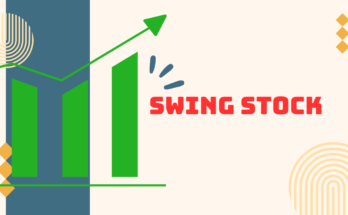Introduction:
ETF Fund Flows: Exchange-traded funds (ETFs) flow has significantly changed the field of finance in recent years. These investment vehicles are well-liked for their practicality, adaptability, and affordability. Investors pay close attention to several factors, including ETF flows, or the movement of money into and out of these funds, in addition to ETF performance and attributes. Investors who want to make wise judgments and diversify the financial market must comprehend the dynamics and implications of ETF movements.
Table of Contents
What are ETFs?

Before we examine the flow of ETF funds, let’s briefly understand what ETFs are.ETFs, similar, to stocks are funds that can be traded on exchanges. They offer investors the opportunity to invest in a range of assets, such as stocks, bonds, or a combination of both. ETFs have gained popularity among both institutional investors due, to their advantages, which include trading options, transparency, and tax efficiency.
Significance of cash flow:
ETF cash flow refers to the amount of money received or withdrawn from the ETF.
They act as an indicator of investor sentiment and provide insight into the popularity and demand of different ETFs. Positive earnings indicate investor interest and negative earnings indicate low investment. Analyzing capital flows can help investors evaluate the performance of the market, identify opportunities or concerns and adjust their investment strategies accordingly.
Factors Influencing ETF Fund Flows:
Several factors affect the direction and size of ETF flows. Let’s examine some of the key factors that affect the flow of money into and out of ETFs.
Market Conditions:
Total Market conditions play an important role in guiding ETF flows. During a bull market, when stock prices rise, investors tend to allocate more money to stocks, which leads to more investment in stock ETFs. Conversely, during periods of economic downturn or an uptrend, investors may shift their investments to less valuable assets such as bonds or gold, resulting in product exit.
Investor Sentiment:
Investor sentiment reflects the collective psychology of market participants and can have an impact on ETF cash flows. As investors invest in the pursuit of potential returns, optimism seems to translate into higher flows, boosting optimism and confidence.
Conversely, pessimism from fear or uncertainty can lead to the rejection of risky assets as investors seek to protect capital.
Performance and Risk:
The performance and risk of an ETF play an important role in attracting or repelling investors. ETFs with a strong historical performance by their criteria will benefit as investors chase returns. Similarly, low-risk ETFs such as those that focus on fixed-income funds will generate stable income, especially when the Business is not clear.
Expenses and Fees:
The costs and management fees associated with ETFs are important to investors.
Low-fee ETFs are often more attractive to investors looking to reduce debt and increase investment returns. In addition, the presence of free trade and brokerage can affect the flow of funds, as investors prefer to invest in ETFs with the potential for cost savings.
Trading Markets:
Market makers play an important role in the flow of funds in ETFs by providing flow to facilitate ETF trading. Its activities, such as creating or using shares, affect the overall supply and demand of the ETF. Increasing the involvement of market makers increases revenue and increases revenue as investors find it easier to buy and sell ETF shares.
Interpreting ETF Money Flow Data:
Analyzing and interpreting ETF money flow data requires a solid understanding of terms and principles. A spike in inflows to an ETF can indicate a strong sentiment for the asset or strategy. Conversely, large outflows may indicate investment concerns or business changes. Various data points must be considered, including historical cash flows, asset classes, and macroeconomic factors, to more effectively interpret cash flow data.
Effects of ETF Fund Flows:
ETF fund flows can have many effects on financial markets. Let’s examine some of the key implications:
Market Liquidity:
Large flows in or out of an ETF can disrupt trading. During periods of high demand, investors may need to create new ETFs to meet demand from investors, thereby increasing the value of the stock. On the other hand, large capital outflows can lead to declines that affect value and job discovery.
Price Changes:
Financial factors can affect the price of the ETF’s assets.In the case of equity ETFs, large inflows can increase the value of the stocks in the ETF’s portfolio, especially if the underlying stocks have low stocks. Conversely, a large investment can cause a decrease in value, as investors may need to sell their holdings to meet redemption demand
Index Composition The:
ETF fund flows can affect the composition of the underlying index. When an ETF earns significant returns, the issuer of the ETF may need to purchase additional shares to complement the ETF’s portfolio with the index it tracks. This purchase can affect the weight of individual stocks in the index, which in turn can affect the performance of index-based strategies.
Market Volatility:
ETF investment flows can affect investor interest in the market. During market cycles, when investors change allocations from one location to another, ETFs that focus on preferred stocks may see positive flows, while those working in less popular jobs can be detected. Monitoring working capital flows provides insight into changing business conditions and investor sentiment.
ETF Money Flow and Active Management:
ETF Money Flow has implications for both passive and active management strategies. Passive managers aim to replicate the performance of an index, and their investments are directly affected by investors’ preference for a particular index or asset.
Active fund managers, on the other hand, rely on their knowledge and skills to be successful in the market. The flow of funds to active ETFs shows that investors are confident in the manager’s ability to generate higher returns.
ETF Streams as a Trading Strategy:
Investors can also use ETF Streams as part of their investment strategy. Good money flowing into a particular industry or asset class can indicate areas of strong economic activity and potential. By developing investments with the right capital, investors can benefit from the joint ventures of their business partners and loudly protect their capital.
Risks Associated with ETF Streams:
While ETF streams can provide great insights, it is important to understand the associated risks. Relying on income as a factor may overlook other important factors such as focus or long-term investment goals. In addition, rapid changes in the fund portfolio can cause price fluctuations and increased market volatility, which can affect the overall performance of ETFs and potentially harm investors.
Regulatory Considerations:
Regulators monitor the flow of funds to ETFs to ensure market stability and investor protection. Authorities can intervene if they see control or potential danger associated with large amounts of money.
Entrepreneurs must comply with construction regulations and comply with regulations or restrictions issued by relevant regulators.
Conclusion:
ETF flows play an important role in understanding the market, investor sentiment, and the impact on assets and indices. By monitoring and analyzing these flows, investors can gain better insights to guide investment decisions and potentially market new events. However, it is important to consider cash flow along with other factors and be careful when basing it on investment choices.
FAQs
FAQ 1: Are ETF fund flows a reliable indicator of market sentiment?
ETF fund flows can provide valuable vision into market sentiment as they reflect investors’ preferences and allocation decisions. However, it is essential to consider fund flows in conjunction with other indicators and perform a comprehensive analysis to gain a more accurate understanding of market sentiment.
FAQ 2: Can ETF fund flow impact the overall market stability?
When they cause significant changes in the prices of assets or liquidity conditions, large-scale ETF fund flows can have an effect on market stability. To keep market stability and secure investors, regulators regularly watch money movements and take appropriate action when necessary.
FAQ 3: How frequently should I monitor ETF fund flows?
The frequency of monitoring ETF fund flows depends on individual investment goals and strategies. Active traders may monitor fund flows more frequently to capture short-term opportunities, while long-term investors may focus on periodic reviews to assess broader market trends.
FAQ 4: What are the advantages of investing in ETFs with positive fund flows?
Investing in ETFs with positive fund flows can offer potential advantages. Positive flows may indicate market strength and investor confidence, potentially leading to better liquidity, tighter bid-ask spreads, and increased chances of tracking the underlying index effectively.
FAQ 5: Can ETF fund flows be manipulated?
While ETF fund flows are generally driven by investor decisions, there is a possibility of manipulation in extreme cases. Regulators have measures in place to detect and prevent manipulative practices to maintain the integrity of the financial markets.
Disclaimer: The financial and investment market information provided on Blogbia is intended for informational purposes only and should not be construed as investment advice. It is highly recommended that you conduct your own research and seek guidance from financial experts before making any investment decisions. The decision to continue reading the content on this website is entirely at your discretion, and it shall be understood as an express acknowledgment and agreement that Blogbia shall be released from any potential legal action or enforceable claims that may arise.




I like what you guys are up too. Such intelligent work and reporting! Carry on the excellent works guys I’ve incorporated you guys to my blogroll. I think it’ll improve the value of my site :).
Thank you so much for your kind words and support. I’m glad to hear that you enjoy my work and find it valuable. I appreciate you adding me to your blogroll and sharing our content with your audience. I hope to continue providing you with quality information and insights. Thanks again for being a loyal reader and follower. :)”
I do love the manner in which you have presented this particular matter plus it does indeed present me personally some fodder for thought. Nonetheless, coming from what I have seen, I only trust as the actual responses stack on that folks keep on point and don’t start on a soap box associated with some other news du jour. Yet, thank you for this fantastic piece and while I do not concur with this in totality, I regard your perspective.
Thank you for your thoughtful feedback! I’m glad to hear that you found the presentation of this matter engaging and that it has provided you with food for thought. We aim to maintain a balanced perspective and appreciate your acknowledgment of that effort. Your recognition of differing viewpoints is valued, and I’m grateful for your respect toward my perspective. If you have any further insights or questions, feel free to share. Your engagement is truly appreciated!